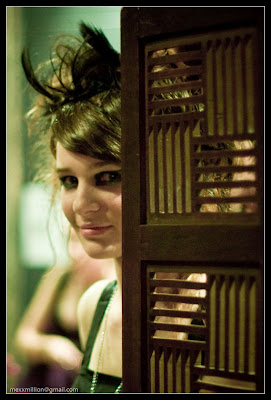
original

Processed in Lightroom, Added border in Photoshop
I think I'll share a little about my digital post processing work flow .
For me, taking photos is just a first step in it. The fun of processing the photos to me is as good as or even better than taking one. I enjoy playing with colors and grading them since I learn Photoshop back in 1996.
Colors can affect the mood of the image and its very important part of an image. If you pay attention to good TV commercials and Hollywood movies, you will notice how they play with colors to portray different mood. From bluesy muted colors of sad, lonely scary scenes to bright , vibrant and contrasty pictures of happy and joyful moments, the Hollywood has already mastered the use of color grading to alter the mood.

original

BW converted in Lightroom
For many high end film/ video post production, there's a process called grading and it went through a "Colorist" using expensive and highly sophisticated hardware/software to grade them.
Generally, people try to start with color correction, to get the right color balance, white point , black point , gamma etc. But they are not hard and fast rules for all cases. Its completely okay to bend them to get what you wanna portray in the picture. Back in the film days, using different film stock can yield different look . Also darkroom can take care of these tasks like dodging , burning .. even using cross processing.

original

Cropped and processed in Lightroom
Now as we move on to digital photography, these tasks has moved into digital realm. And previously I used Photoshop to tweak colors and manipulate my images. But when I got back into photography after I got my first DSLR two months ago, I discovered Adobe Lightroom.
Adobe Lightroom is an amazing program. Its flexible , easy to use and non-destructive. I use it to process all my photos. I shoot all my photo in RAW mode ( think of them as digital negatives) and import them into LR to porcess them all the way I wanted.

original

Cropped and processed in Lightroom
I usually start by adjusting the exposure, white point and black point. And then play with contrast and curve. This will get me a starting point for right exposure.
Then I am starting to playing with cropping to recompose. After that, I'll adjust white balance, hue and vignetting etc to make the image works..
You can see how these images has changed from original RAW image to final outputs. They usually look average to me when it came straight out of camera. Flat contrast, saturated tone etc. One thing to note is that I didn't use any mask or selection based color correction in my photos. All of these results are achieved with adjusting various sliders in Lightroom develop module. Lightroom color adjustment tools are pretty easy and great to use. But I'd like to see sliders to tweak color , hue and brightness in different zones ( like highlight or shadow) in next genereation of Lightroom.


But as color is a subjective matter just like music. So I dont dare to say I am doing the best decision for my photos. Different people like different taste. I am still learning this by posting my photos to Filckr, my blog here and different forums and getting their response.


So, feel free to let me know if these works for you or not.
I'll post more detail processing in Lightroom later..
Cheers..















































